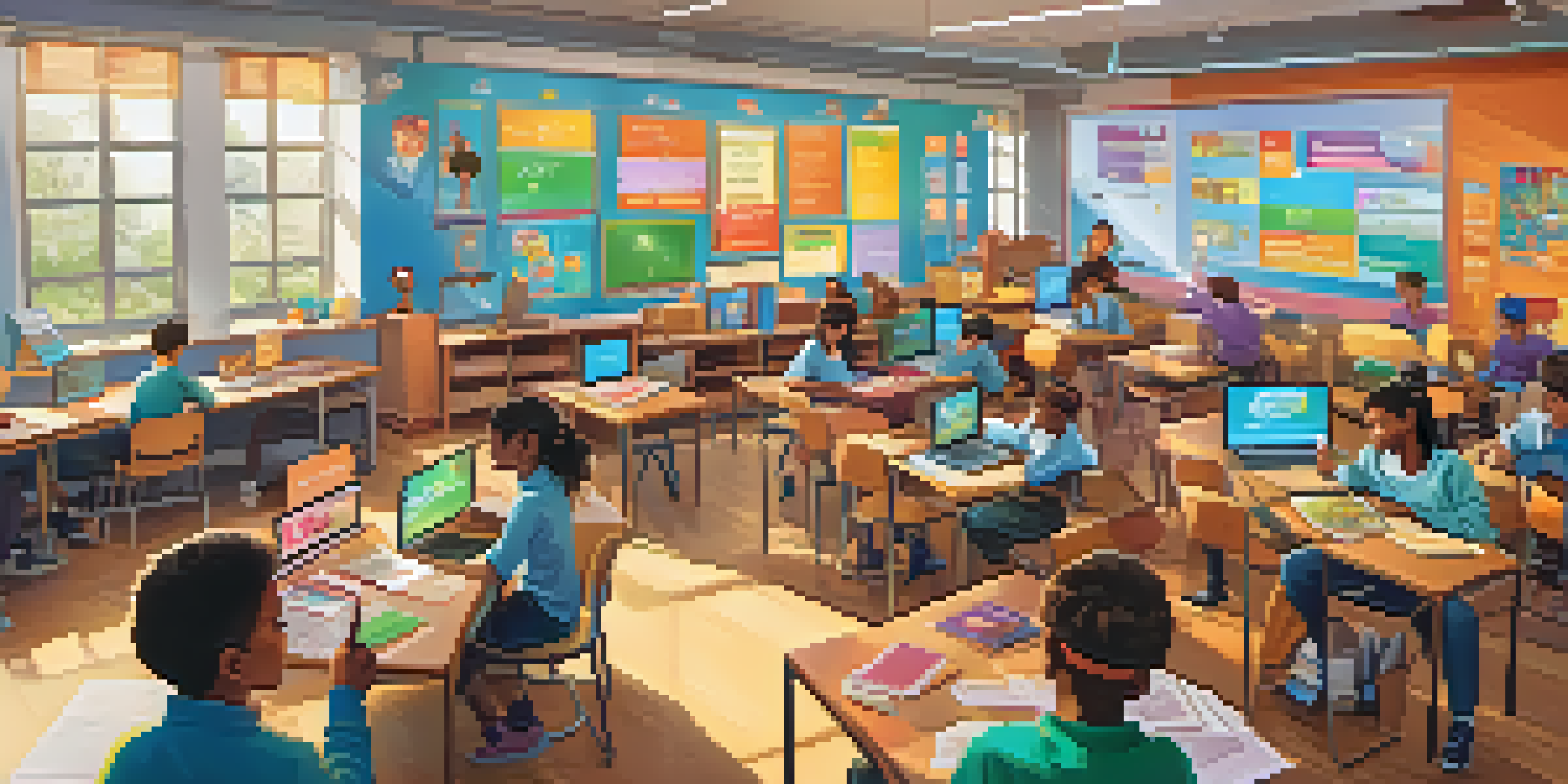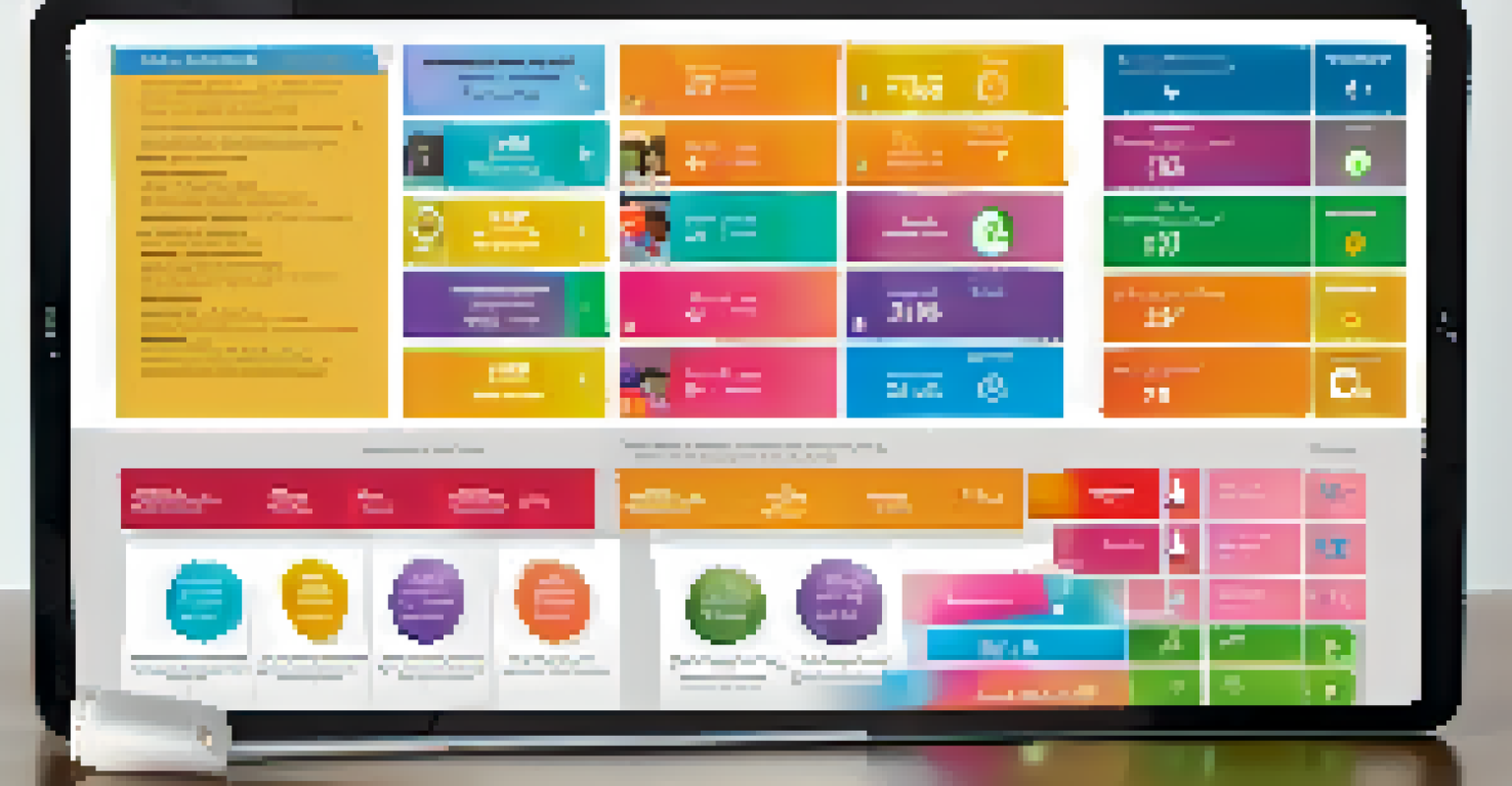Gamification in Education: Boosting Engagement and Learning

Understanding Gamification: What It Is and Why It Matters
Gamification refers to the integration of game-like elements into non-game contexts, such as education. By incorporating elements such as points, badges, and leaderboards, educators can create a more engaging learning environment. This approach taps into the motivation that games naturally provide, making learning feel less like a chore and more like an adventure.
Game mechanics can be used to motivate and engage students in their learning experiences.
The importance of gamification in education lies in its ability to enhance student engagement and retention. When students are actively involved and motivated, they are more likely to absorb information and develop a love for learning. It's similar to how children learn through play – they are more likely to remember concepts when they are having fun.
Moreover, gamification can cater to different learning styles, allowing students to engage at their own pace. For instance, visual learners might thrive on interactive simulations, while others might enjoy quizzes that reward them with points. This flexibility makes it an invaluable tool in diverse classrooms.
The Psychological Benefits of Gamification in Learning
Gamification leverages psychological principles that drive human behavior, such as rewards and competition. When students earn points or badges for completing tasks, they experience a sense of achievement that boosts their confidence. This positive reinforcement encourages them to take on more challenging tasks and persist in their learning journey.

Additionally, gamified environments can reduce anxiety around assessments. By framing quizzes or tests as games, students may feel less pressure and more excitement, leading to better performance. This transformation of assessments into engaging activities can significantly alter how students perceive their academic challenges.
Gamification Boosts Engagement
Integrating game elements in education enhances student motivation and makes learning more enjoyable.
Furthermore, elements like teamwork and collaboration often found in games can foster a sense of community among learners. As students work together to achieve common goals, they build social skills and a supportive learning environment. This camaraderie can lead to lasting friendships and a more inclusive classroom atmosphere.
Case Studies: Successful Gamification in Education
Many schools and educational institutions have successfully implemented gamification strategies with remarkable results. For instance, a middle school in California introduced a gamified math program that turned problem-solving into a quest. Students navigated through levels, earning rewards for completing challenges, which resulted in a significant increase in test scores.
Gamification is not about putting badges on everything; it’s about designing experiences that help people learn.
Another example is a language-learning application that employs gamification techniques to keep users engaged. Users earn points for completing lessons, and they can compete with friends on leaderboards. This not only motivates users to practice regularly but also makes language acquisition more fun and interactive.
These case studies highlight that when educators creatively integrate gamification, they can unlock new levels of student engagement and success. The positive outcomes from these initiatives serve as a model for others looking to enhance their teaching methods.
Challenges and Considerations in Implementing Gamification
While gamification in education offers many benefits, it is not without its challenges. One of the main concerns is ensuring that the game elements do not overshadow the educational content. It's crucial to strike a balance where students are motivated to learn, not just to win rewards.
Another challenge is the potential for unequal participation. Not all students are equally motivated by competition, and some may feel discouraged if they are consistently at the bottom of the leaderboard. Educators must consider how to create a supportive atmosphere that encourages all students to engage, regardless of their initial skill levels.
Psychological Benefits of Gamification
Gamification fosters confidence and reduces anxiety by transforming assessments into engaging activities.
Lastly, implementing gamification requires resources, such as training for educators and technology support. Schools must be willing to invest in these areas to ensure the successful integration of gamified elements into their curriculum, which can be a hurdle for some institutions.
Tools and Platforms for Gamifying Education
Numerous tools and platforms are available to help educators incorporate gamification into their teaching. For example, platforms like Kahoot! and Quizlet allow teachers to create interactive quizzes that students can participate in as a game. These tools not only make learning fun but also foster healthy competition among peers.
Additionally, learning management systems (LMS) like Classcraft and Edmodo offer comprehensive gamification features, including points, badges, and avatars. These systems provide educators with the ability to track student progress while maintaining an engaging environment.
Using these tools can significantly enhance the learning experience, making it easier for educators to implement gamified strategies. By exploring various platforms, teachers can find the right fit for their classrooms, ensuring that gamification aligns with their educational goals.
Best Practices for Effective Gamification in Education
To maximize the benefits of gamification, educators should follow some best practices. First and foremost, it's essential to align game elements with educational objectives. This means ensuring that every point, badge, or level achieved contributes to the learning goals set for students.
Moreover, providing timely feedback is crucial. Just like in games where players receive immediate reactions to their actions, students thrive on knowing how they are performing. Educators should offer constructive feedback alongside rewards to help students understand their progress and areas for improvement.
Challenges in Gamification
Implementing gamification requires careful balance to ensure educational content remains the focus and to accommodate diverse student motivations.
Lastly, it's important to keep the experience fresh and exciting. Regularly updating challenges and introducing new game elements can keep students engaged and motivated. This dynamic approach ensures that gamification remains a valuable tool throughout the academic year.
The Future of Gamification in Education
As technology continues to evolve, so too will the possibilities for gamification in education. With advancements in virtual reality (VR) and augmented reality (AR), educators may soon offer immersive learning experiences that further engage students. Imagine exploring ancient civilizations through VR while earning badges for historical knowledge!
Additionally, as data analytics improve, educators will be able to customize gamified experiences based on individual student needs. By analyzing progress and preferences, teachers can tailor challenges that resonate with each learner, enhancing engagement even further.

The future of gamification in education looks promising, with the potential to transform how students learn and interact with their studies. By embracing these innovations, educators can create a more dynamic and enjoyable learning environment that prepares students for the challenges ahead.